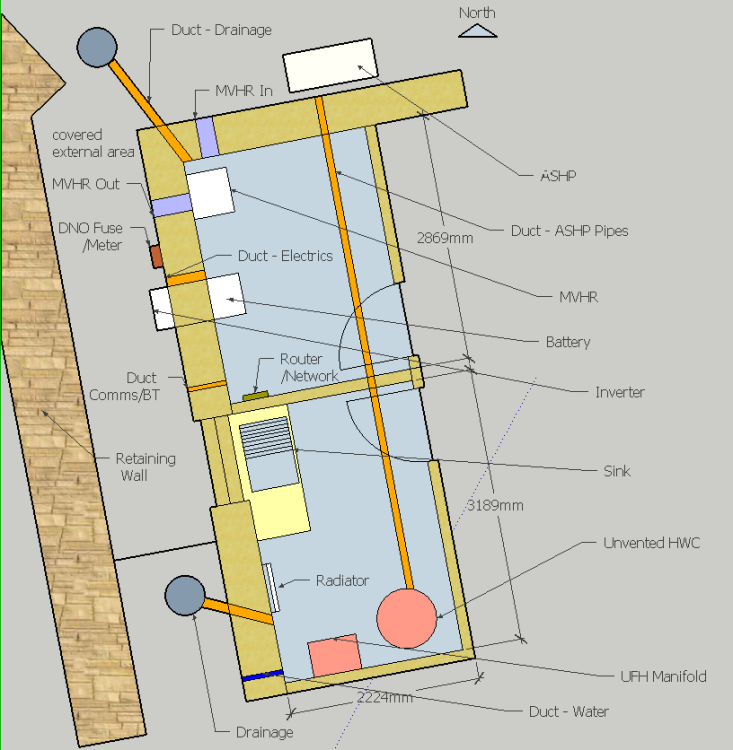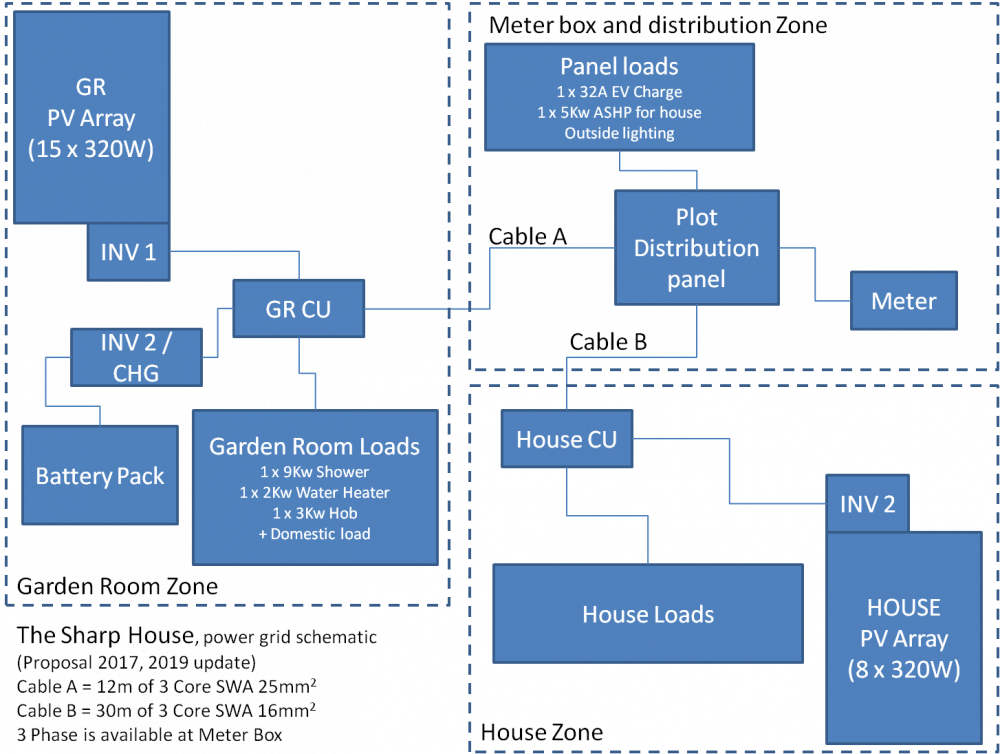Search the Community
Showing results for tags 'inverters'.
-
Hi all - The combined wisdom on here is unrivalled and I have picked up countless tips - ever so useful. So I thought I would pick your brains! We are still getting plans ready for the planning application. The house is going to be built into the side of a hill (with a gap of around 1.2m between the house and retaining wall.) It works out best for the views (and light) to have an upside down house with bedrooms on the ground floor and living areas on the first floor - where the front door will open out to the roadside. The light on the North/West sides is quite limited and it makes sense to put the plant and utility spaces here. Attached is an my initial thought on the layout of the plant/utility space and where to place any ducts - the plan is go for a fabric first approach which includes ensuring all the external connections go through the slab rather through the walls to reduce the cold bridging. My rational for the layout is: ASHP on the north façade - placed the un-vented hot water cylinder much further into the centre of the house so the bath/shower/washing machine are all close to minimise the hot water pipe lengths. By moving this to the Utility space I though it would then be a sensible option to have all the water centric kit (washing machine/dryer/UHC/UFH) separate from the electrical kit. Placed the inverter externally to avoid over heating (as suggested by Jeremy H) - it is not in sun light and there is a cover over as well. Is the layout sensible - any suggestions - all thoughts gratefully received. Thank you.
-
It seems to be something of an industry standard practice to under solar inverters relative to the power of the solar panels fitted, typically about 25% below the rated max of the panels. For example, I know of an 8 kW panel system facing due south with a 6 kW inverter (feeding home, EV, Powerwall, and grid); while at the other end of the scale (and country) the well-respected, long-established local company who installed my system insisted that a 1.6 kW inverter was the right size for 2.1 kW of panels (also south-facing). Both inverters are current gen Solis. It was explained to me that the smaller inverter would be more efficient when the panel output voltage is lower on cloudy days, which are obviously the norm for most of the time in the UK. But it just bothers me when I see the system output pegged at 1.65 kW with the sun out... When collecting lots of quotes for a larger rooftop project (20 kW) I noted that some installers were specifying undersized inverters and some were not. It tended to be the younger companies who were not. We've picked a company who happen not to be undersizing (on the basis of price per watt of panel, not that they didn't spec an undersized inverter). What do you guys think? Undersizing inverters, yay or nay?
-
When installing PV the local distribution network operator (DNO) needs to be told if the installation is more than 3.9Kw (ish). For those in the know the G59 form, which was the route for this communication, is now defunct and the new G99 process is order of the day for grid connected PV schemes above 3.9Kw, ours will be around 7.5Kw so we need to go through the G99 process, via form A1-1 (simplified). Before I ring UK Power Networks I was wondering if anybody has been through G99 and can give me a heads up on how it was for you. I want to avoid using more than one phase because of the extant cabling and the dangers of having using more than one phase across what it otherwise a domestic site. So I am going to try that approach first. One thing I have not provisioned for is the G99 relay I suspect I need in here somewhere, I guess it goes just after (on the way in) the incomer breaker? Although relays seem a lot less 'talked about' nowadays! Our schematic of 2017 is attached and I am also wondering how I might control this so I don't end up exporting the battery output or, more importantly, using it to charge the EV (our next car will be an EV) and then have nothing to get us through the night. I wonder if the various inverters are / some are able to cope with this complexity without active control? Any observations gratefully accepted - perhaps I have more than 2 problems?



